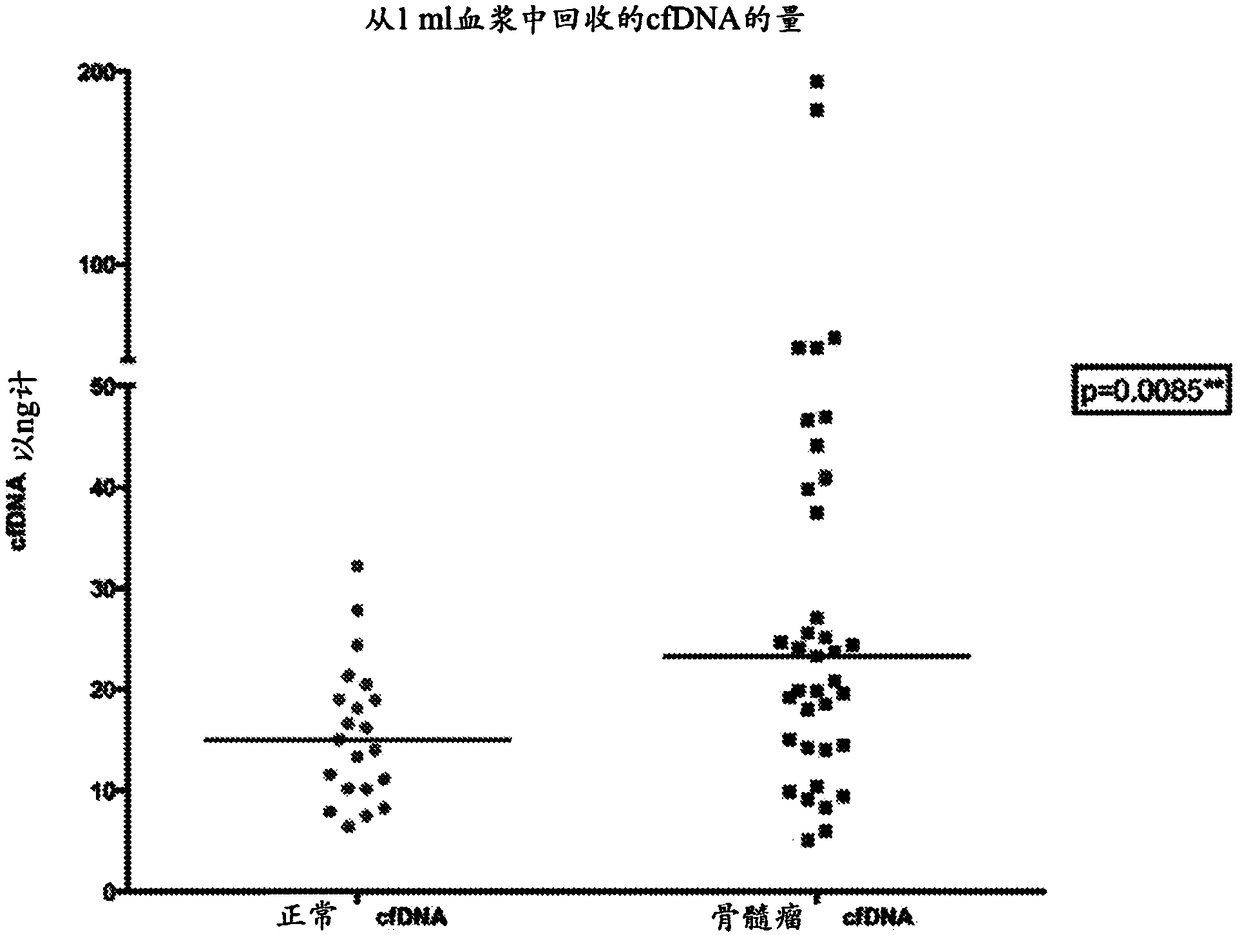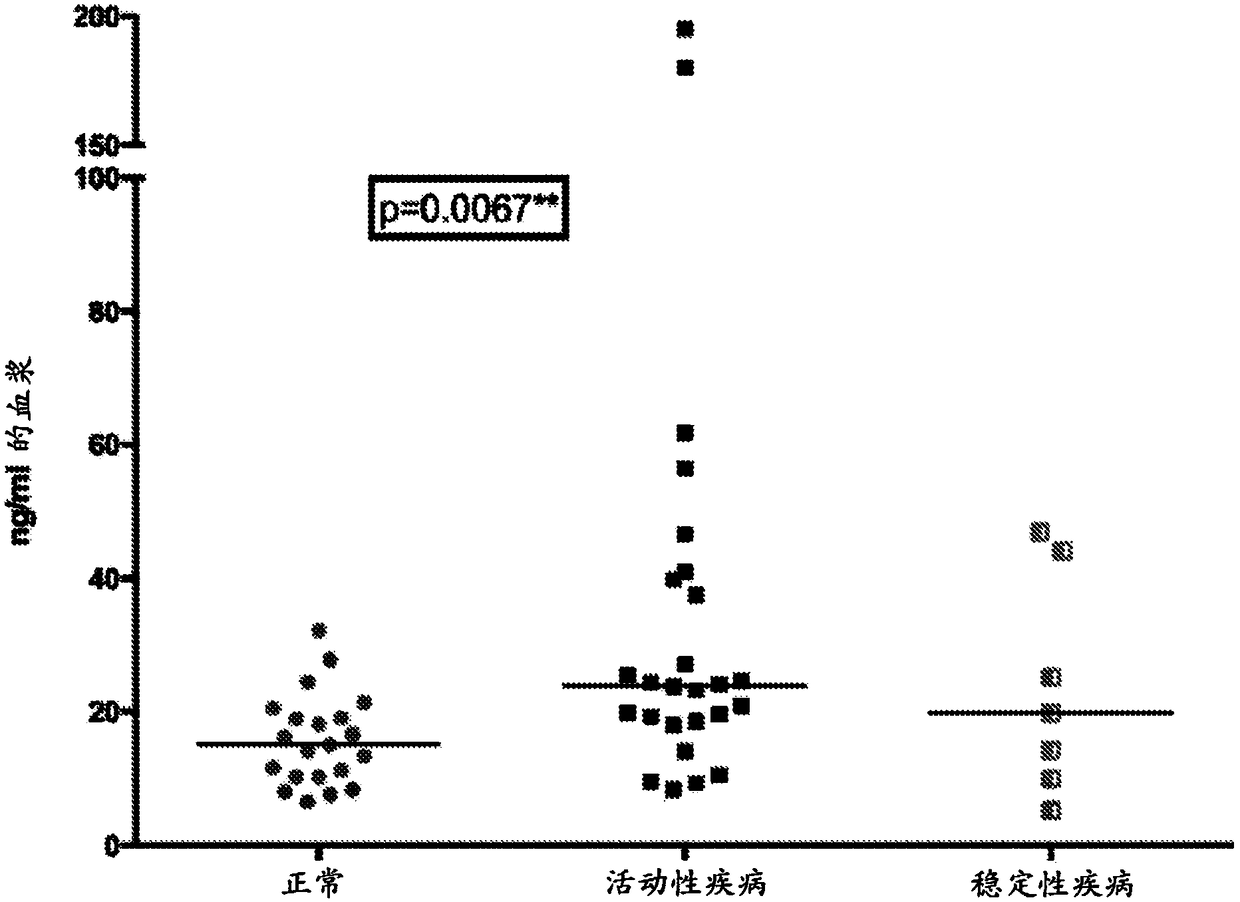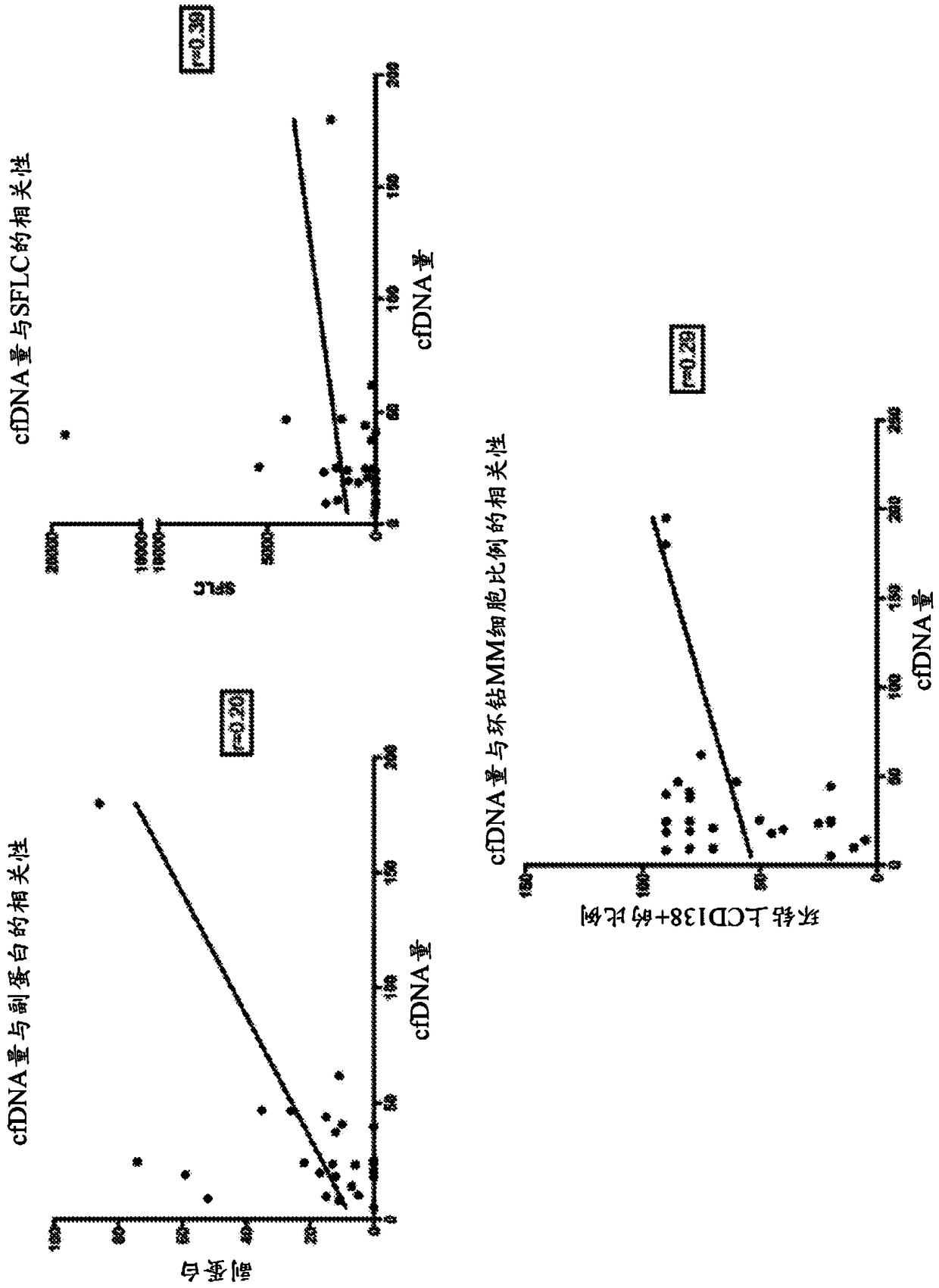Monitoring treatment or progression of myeloma
A multiple myeloma, bone marrow technology, applied in the field of monitoring the treatment or progress of myeloma, can solve problems such as genetic information interference
- Summary
- Abstract
- Description
- Claims
- Application Information
AI Technical Summary
Problems solved by technology
Method used
Image
Examples
example 1
[0242] Peripheral blood (PB) collection and processing:
[0243] PB samples (30ml) were obtained from normal volunteers (NV) or MM patients using 10ml Streck Cell-Free DNA BCT tubes or 10ml EDTA tubes after obtaining informed consent according to the Alfred Human Ethics Committee . Immediately after sample collection, the tubes were inverted to mix the blood with the preservative in the collection tube, which prevents the release of DNA from blood cells during sample processing and storage (Das K et al. (2014) Molecular diagnosis & therapy 18 (6): 647-653; Qin J, Williams TL and Fernando MR (2013) BMC research notes [BMC research notes] 6: 380). Plasma (PL) was separated from PB by centrifugation at 820 xg for 10 minutes (min). The supernatant was collected without disturbing the cell layer and centrifuged again at 16,000 xg for 10 min to remove any remaining cell debris. Supernatants were collected and stored in 1 ml aliquots at −80 °C for long-term storage until isolati...
example 2
[0280] Cell-free DNA content is significantly higher in MM patients than in normal volunteers
[0281] The amount of cfDNA in MM patients (n=37) and NV (n=21) was determined. Higher amounts of cfDNA were obtained from MM patients than from NV (median 23 ng / ml [range 5-195 ng / ml] vs 15 ng / ml [range 6-32 ng / ml], respectively, p=0.0085, figure 1 ). When the amount of cfDNA was correlated with disease stage, it was evident that patients with active disease (ND and recurrent disease) had significantly higher amounts of cfDNA compared to NV (p=0.0067; figure 2 ). Although the amount of cfDNA was significantly higher in patients with active disease, its level did not correlate with the amount of paraprotein, serum free light chains, and BM MM cell ratio ( image 3 , Spearman rank correlation coefficient).
example 3
[0283] Analysis of both BM MM cells and ctDNA provides a comprehensive elucidation of the mutational landscape of MM patients
[0284] Contemporaneous CD138-enriched MM tumor cell populations were collected from 48 MM patients (15 newly diagnosed [ND] patients and 33 relapsed / refractory [RR] patients), and all paired BM MM DNA and ctDNA specimens as well as 6 wild-type (WT) DNA controls underwent OMD. A total of 128 mutations were detected in MM patients (BM and / or ctDNA) (KRAS n=65 [50.7%], NRAS n=37 [28.9%], BRAF n=10 [7.8%], TP53n=16 [12.5%] %]), not detected in WT control ( Figure 4 ). Of the 128 mutations, n=38 mutations were found in both BM and PL, n=59 mutations were found in BM and n=31 mutations were found in PL. Furthermore, a total of 53.9% of mutations were found in PL, indicating the presence of ctDNA in MM. Ten of the 48 patients had 31 mutations in the PL that were not present in the BM, so a total of 24.2% were detected exclusively or predominantly dist...
PUM
 Login to View More
Login to View More Abstract
Description
Claims
Application Information
 Login to View More
Login to View More - R&D
- Intellectual Property
- Life Sciences
- Materials
- Tech Scout
- Unparalleled Data Quality
- Higher Quality Content
- 60% Fewer Hallucinations
Browse by: Latest US Patents, China's latest patents, Technical Efficacy Thesaurus, Application Domain, Technology Topic, Popular Technical Reports.
© 2025 PatSnap. All rights reserved.Legal|Privacy policy|Modern Slavery Act Transparency Statement|Sitemap|About US| Contact US: help@patsnap.com



